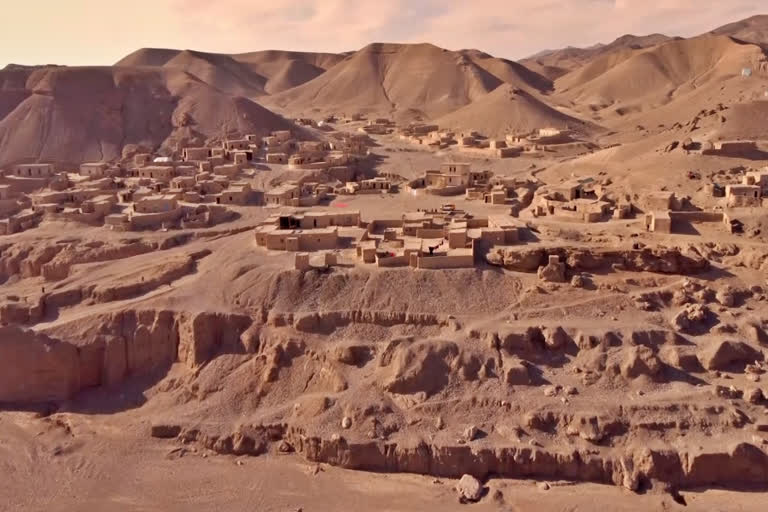Kamar Kalagh (Afghanistan): Hajji Wali Jan brought a half-dozen plastic containers to a well in Kamar Kalagh on a recent Friday — one of the handful days each week he and those who live on his side of the Afghan village are allowed to use the water source.
When it was finally his turn, the 66-year-old filled one container, then a second.
The stream of water from the spigot got thinner.
He started on another container — but the thread of water tapered away and then stopped before the vessel was full.
The well was done for the day.
Afghanistan's drought, its worst in decades, is now entering its second year, exacerbated by climate change.
The dry spell has hit 25 of the country's 34 provinces, and this year's wheat harvest is estimated to be down 20% from the year before.
Along with fighting, the drought has contributed to driving more than 700,000 people from their homes this year, and the onset of winter will only increase the potential for disaster.
Also read:Wretched Conditions In Afghanistan; People Suffer Under Taliban
"This cumulative drought impact on already debilitated communities can be yet another tipping point to catastrophe," the U.N. Food and Agricultural Organization's Afghanistan office said in a tweet on Tuesday.
"If left unattended, agriculture might collapse."
U.N. experts blamed a late 2020 La Nina event, which can change weather patterns across the globe, for causing lower rain and snowfall in early 2021 in Afghanistan, and they predict that it will continue into 2022.
Afghanistan has long seen regular droughts.
But in a 2019 report, the FAO warned that climate change could make them more frequent and more intense.
The past year's drought came on the heels of one in 2018 that at the time was the worst seen in Afghanistan in years.
In the midst of the drought, Afghanistan's economy collapsed in the wake of the August takeover by the Taliban that resulted in a shut-off of international funds to the government and the freezing of billions of the country's assets held abroad.
Jobs and livelihoods have disappeared, leaving families desperate for ways to find food.
The FAO said last month that 18.8 million Afghans are unable to feed themselves every day, and by the end of the year that number will be 23 million, or nearly 60% of the population.
Also read:US unlikely to release Taliban fund even as Afghanistan braces for mass starvation
Already hit hard by the drought of 2018, small villages like Kamar Kalagh are shriveling away, unable to squeeze out enough water to survive.
